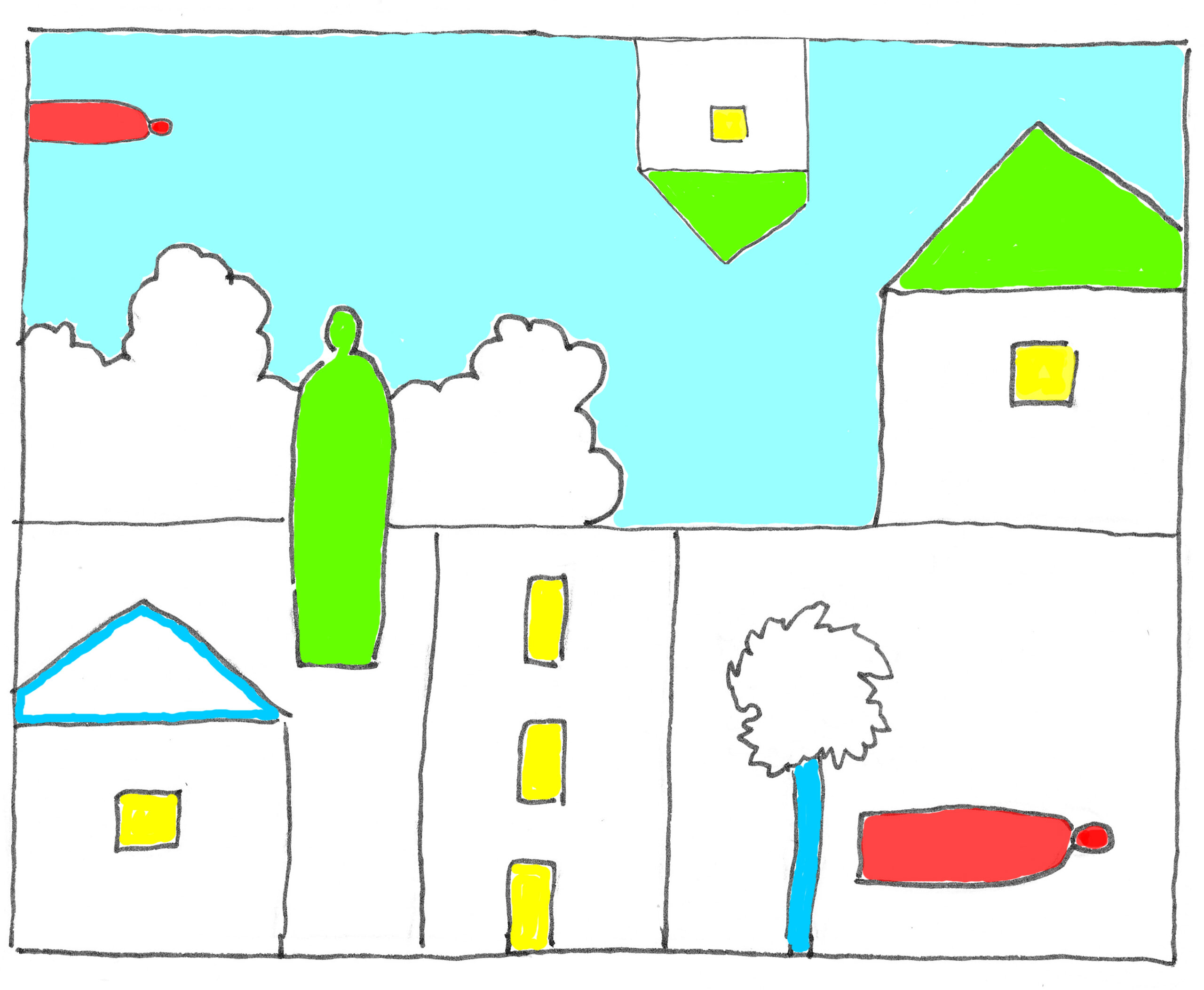Chapter 3 | ON THE ROAD
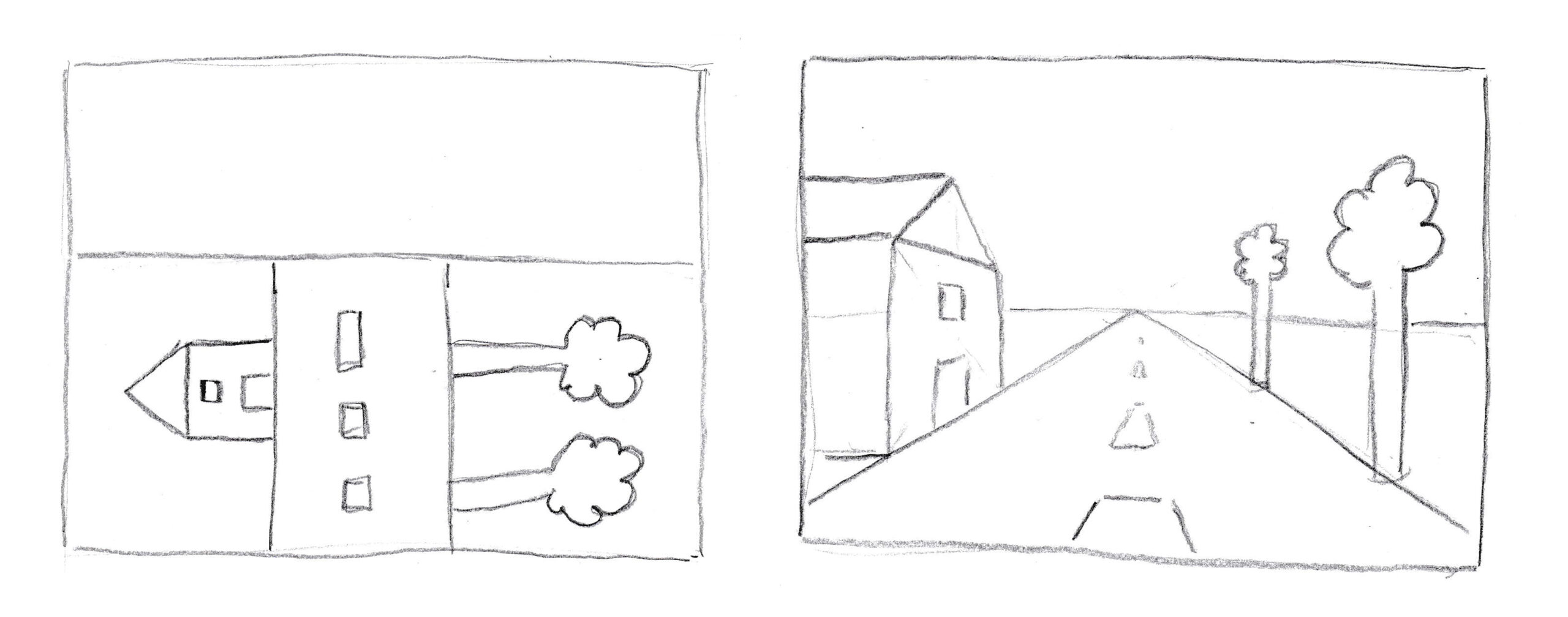
In reality, a road (or a bridge, runway, railway, canal) is of course just as wide in the distance as it is close by. Yet, a road seems to become increasingly narrower in the distance before our eyes. This can be clearly seen in a photo of tracks in the snow (source: NOS 23-11-2024).
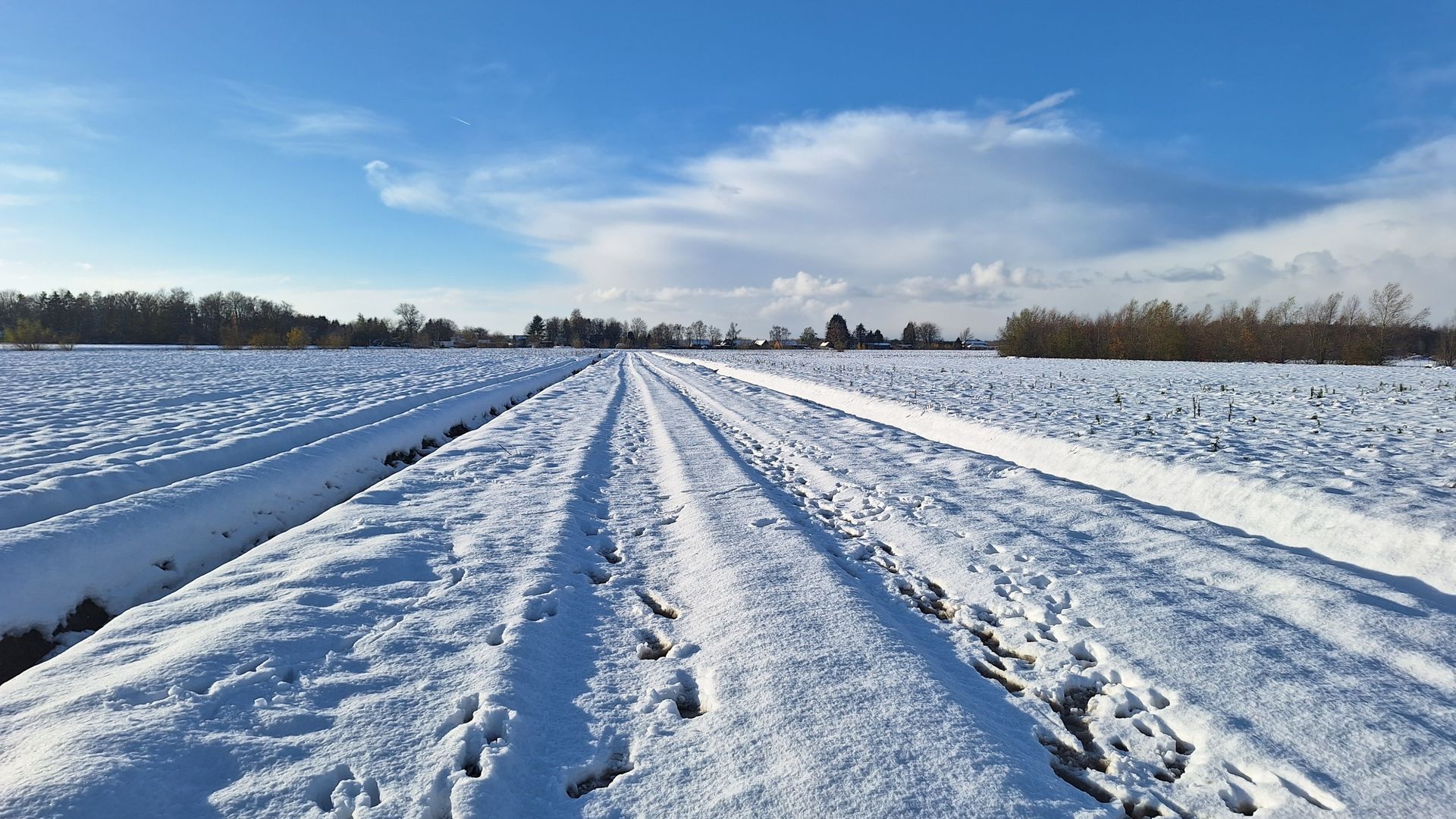
In a perspective drawing, the lines of the road therefore come closer together until they finally converge at a vanishing point on the horizon. We cannot see the road beyond the horizon.
Exercise 1: Draw a road to the horizon using a ruler (left) or freehand to make it look like land or water (right). Draw this kind of perspective drawing in a frame. This way you make it seem as if we are looking through a window into the distance.
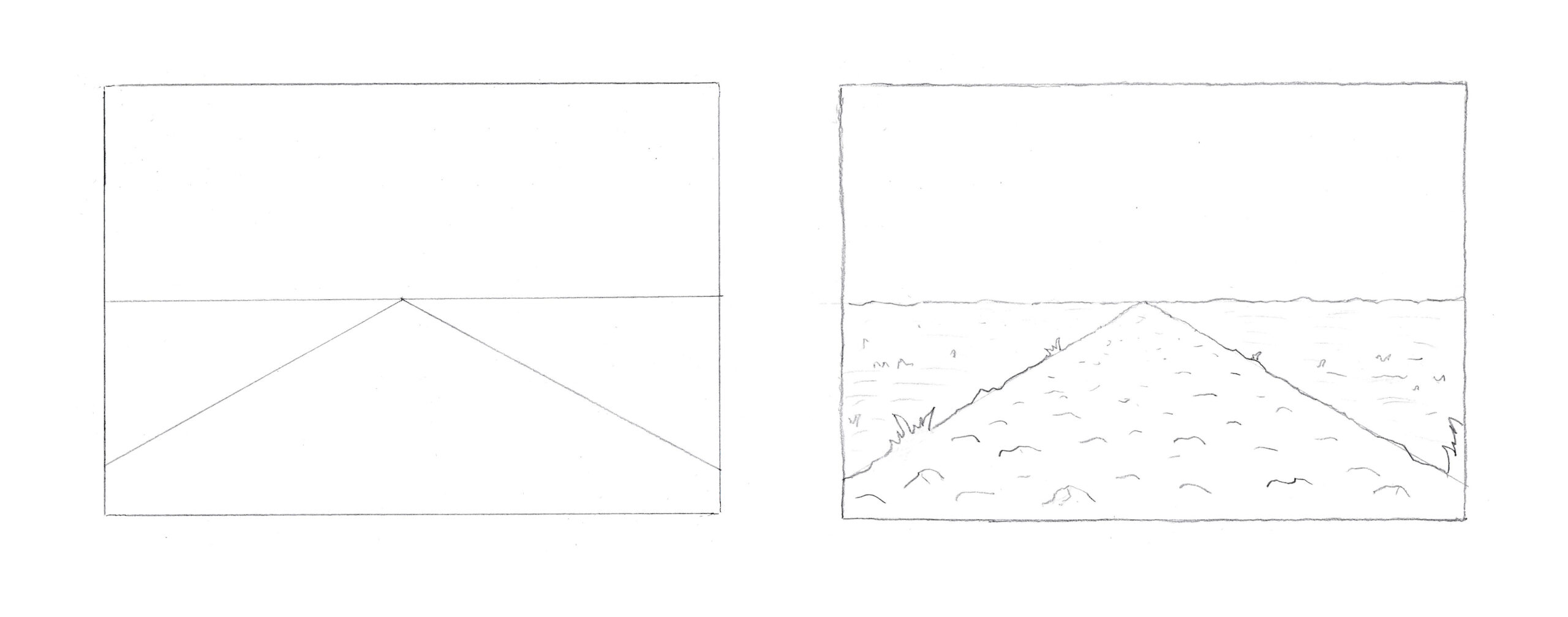
Noise barriers, walls. trees or fences on either side of the road actually run in the same direction as the road itself. The rule is: all lines that actually run parallel/in exactly the same direction (such as the road and the noise barriers) come together in the same vanishing point in a perspective drawing. Note: by drawing the vertical lines in the walls further away each time a little closer together, I have enhanced the depth effect (image).
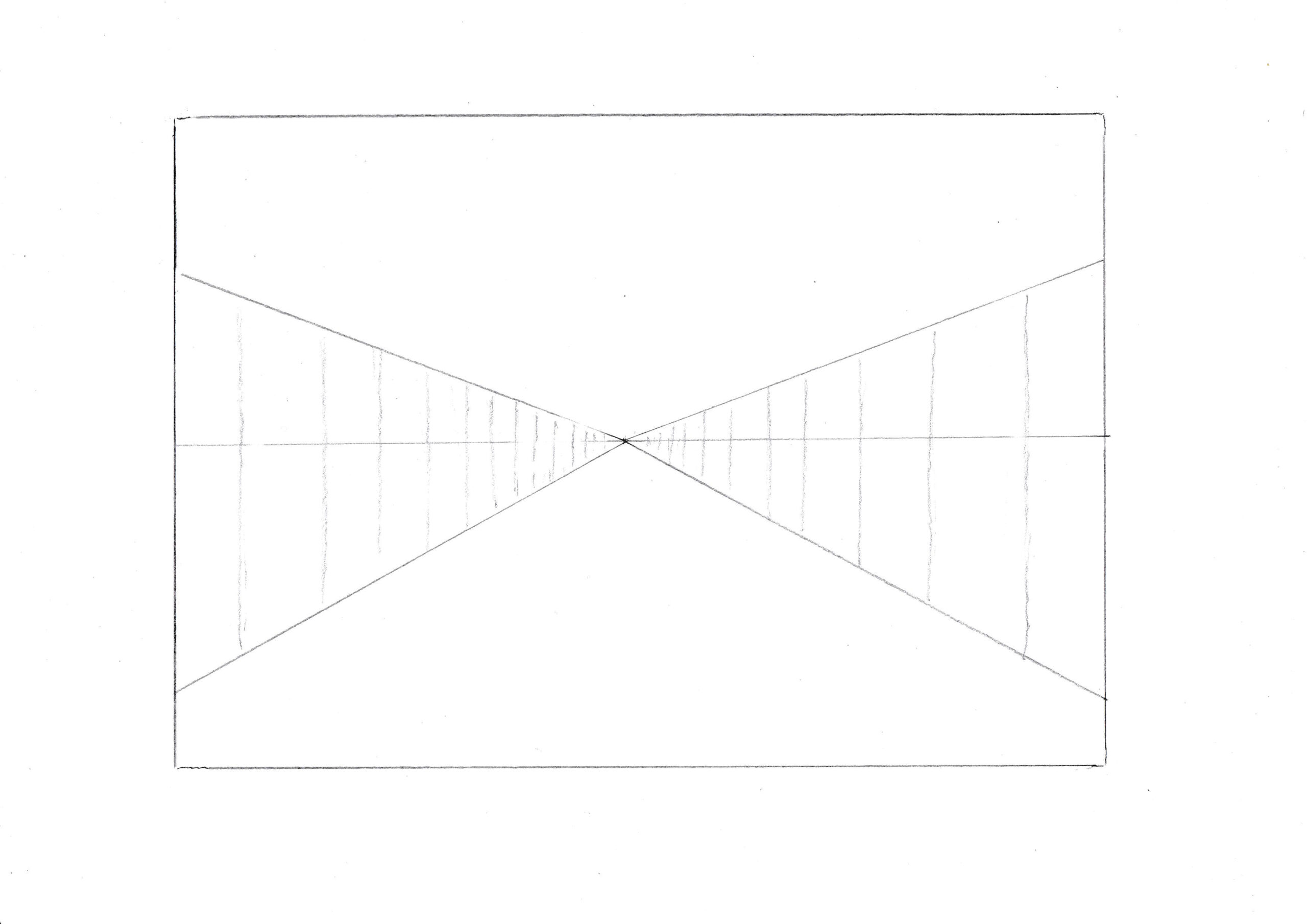
Exercise 2: Draw a road to the horizon with (for example) noise barriers. Of course, it could just as well be a bridge, canal or lock with walls on both sides. You can decorate, colour or cover the noise barriers/walls with plants.
In the next drawing of the road with noise barriers, I added three figures on the road with their heads at eye level (I assume that all three are about the same height in reality). Look at the man in the foreground on the right: by drawing an assisting line from his feet to the vanishing point, I could determine exactly where the woman behind him should stand.

The big trick is that all figures in a perspective drawing shrink/become smaller as they get further away from us, until they too disappear into a vanishing point on the horizon. A vanishing point is like a black hole that eventually swallows everything in the distance.
Exercise 3: draw a road or bridge with walls and place a few figures on the road so that the perspective is correct. If necessary, use simple ‘sleeping bag figures’ from the lesson The Human figure part 1, chapter 1 level 1.
What applies to noise barriers also applies to other objects of the same size along a road. To draw this correctly, you have to use assisting lines that run towards the vanishing point. We call those perspective flight lines. Note that lines that do not run away from us have remain horizontal or vertical. Learn more about such perspective constructions in the lesson Perspective part 2 (level 3).
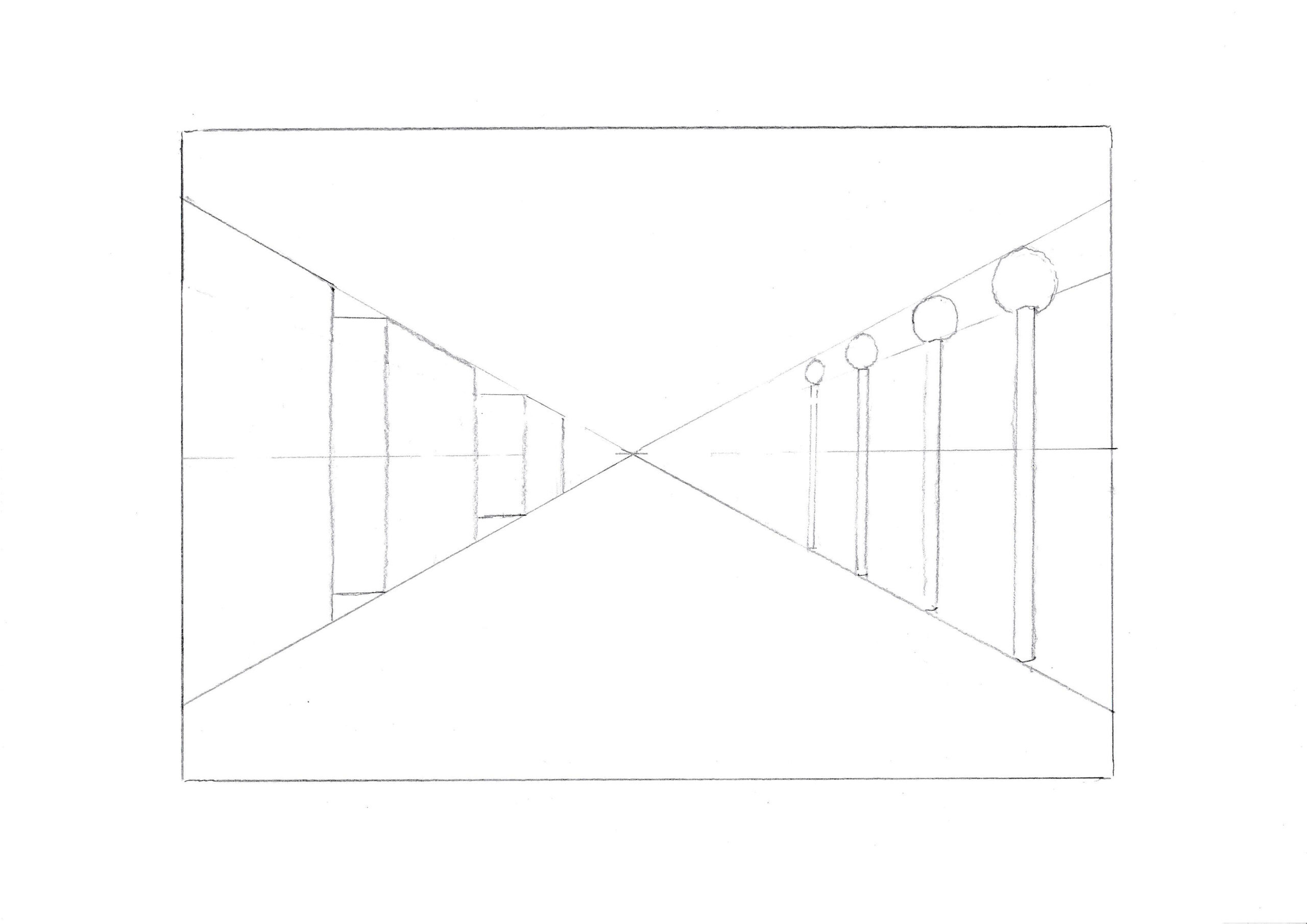
Extra: in the next window nothing is correct anymore. There are no longer any rules of perspective here!
It might be fun to make such a drawing in a frame, with everything just above, next to and below each other and even upside down. The drawing has no perspective on purpose! Only color what you like to color. Make the frame as small or large as you want.
